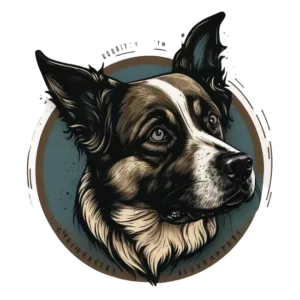
The Cantonese Bear Dog is an old breed of Chinese dog that has been around for centuries. They are loyal and loving companions who make wonderful family pets, thanks to their intelligence and friendly nature. In this blog post, we’ll explore the history of the Cantonese Bear Dog, its physical characteristics, and how to care for it. We will also discuss the potential health issues associated with this breed as well as tips on training your new pup.
History of the Breed
The Cantonese Bear Dog dates back to ancient China where it was bred for hunting small game such as birds, rodents, and hares. Its name comes from its resemblance to a bear cub when viewed from a distance. During the 18th century, many of these dogs were given as gifts by the Emperor Qianlong to other royal families in Europe. Over time, the breed spread across the world and became popular in England and America.
Appearance and Personality of the Cantonese Bear Dog
Cantonese Bear Dogs have long coats that come in a variety of colors, including black, white, gray, red, and tan. They have medium-sized heads and short muzzles with round eyes that range from light brown to dark amber. The average height of an adult Cantonese Bear Dog is between 10 and 12 inches tall, while they can weigh anywhere from 10 to 20 pounds.
This breed is known for being highly intelligent and alert, making them great watchdogs. Their temperament tends to be gentle and calm but at times they can be boisterous or excitable. Despite their size, they love to run and play, which makes them excellent jogging companions. Additionally, Cantonese Bear Dogs are incredibly loyal and devoted to their owners and form strong bonds with those they trust.

Care Requirements of the Cantonese Bear Dog
Like all breeds, the Cantonese Bear Dog needs plenty of exercise to stay healthy and fit. This includes regular walks, trips to the park, and activities like swimming or agility courses. As they tend to get bored easily, providing mental stimulation is also essential. This could include things like puzzle toys or interactive games with treats.
Feeding should always consist of high-quality food specifically designed for smaller breeds. Puppies need more calories than adults so it’s important to follow your vet’s advice on what type of food to give them at different stages in life. The amount of food each dog requires varies depending on age, activity level, and size, so always read feeding instructions carefully.
It’s also important to brush your Cantonese Bear Dog’s coat regularly to prevent mats from forming. Bathing should only occur every few months using a shampoo made specifically for dogs. Furthermore, you should check their ears weekly for signs of infection and trim their nails as needed.
Exercise Needs
As previously mentioned, the Cantonese Bear Dog loves to run and play, so it’s important to provide them with enough daily exercise. Taking your pet on long walks or runs is an excellent way to keep them active while exploring their environment. Visiting a dog park or allowing them off-leash in a secure area provides an opportunity for socialization and supervised playtime with other canine friends. It’s also recommended to participate in activities such as agility classes or dog sports, as this helps build confidence and keeps them mentally stimulated.
Potential Health Problems in the Cantonese Bear Dog
Although the Cantonese Bear Dog is generally considered a healthy breed overall, there are certain health problems they may face over time due to genetics or environmental factors. These can include hip dysplasia, patellar luxation (loose knee joints), eye diseases, heart murmurs, bladder stones, and ear infections. To help reduce the risk of developing any serious illnesses, schedule regular wellness exams with your veterinarian and make sure vaccinations are up-to-date.
Grooming Needs
The Cantonese Bear Dog has a thick double coat that needs regular brushing and combing in order to remain tangle free. When bathing your pet, use only mild shampoos specifically formulated for dogs. Nails should also be trimmed frequently to avoid discomfort when walking. Additionally, their ears should be checked often for debris or signs of infection and cleaned if necessary.
Is the Cantonese Bear Dog Right For Me?
If you’re looking for a loyal companion who loves spending time with their human family then the Cantonese Bear Dog may be just right for you! While they do require plenty of attention and exercise, this breed makes an ideal house pet thanks to its loving personality and low maintenance grooming requirements. Just remember that despite their small stature, they still need a fair amount of space since they love running around outdoors whenever possible.
Tips For Training Your Cantonese Bear Dog
When training your Dog it’s important to set boundaries early on so that they understand what behavior is expected of them. Be consistent with commands and reward good behavior with treats or praise; negative reinforcement should not be used as this can lead to aggression or fearfulness later down the line. Establishing a routine is also beneficial in helping your pet learn better habits over time.
Frequently Asked Questions
This breed is known for having a moderate energy level meaning that they are fairly easy going most of the time but enjoy playing vigorously when given the chance.
Yes, Cantonese Bear Dogs make great family pets as they are very patient and affectionate towards children of all ages.
On average, an adult Cantonese Bear Dog stands about 10-12 inches tall and weighs between 10-20 pounds.



